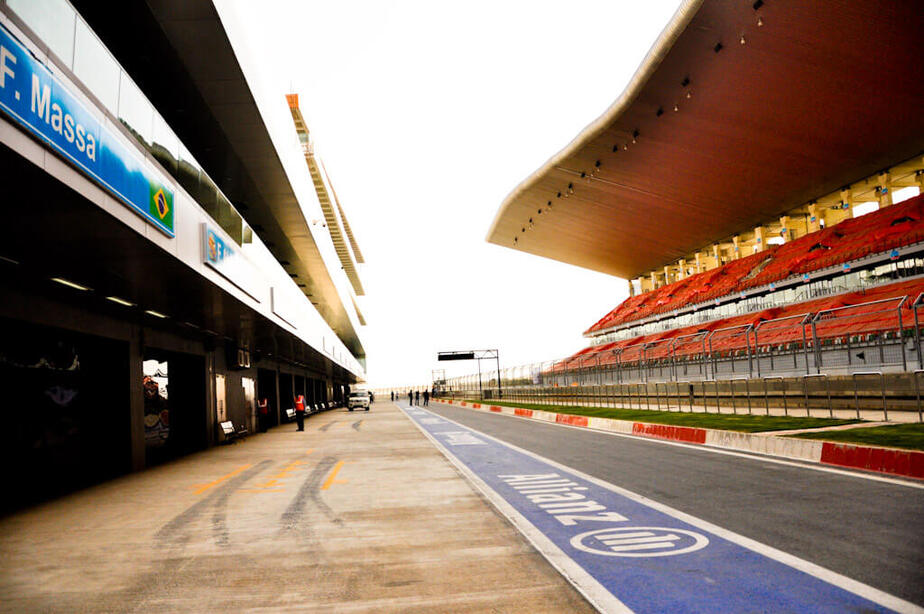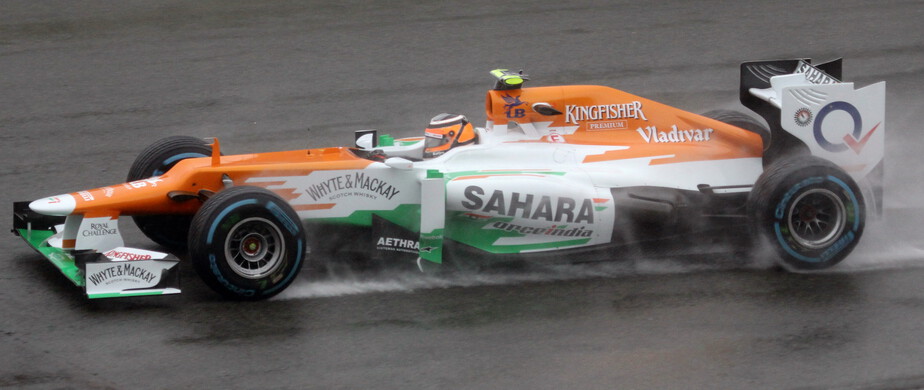Researched by Yash Budhwar
Written by Tanay Gokhale
Between 2011 and 2013, India hosted three editions of the Indian Grand Prix at the Buddh International Circuit in Uttar Pradesh. Apart from the noise about the Formula One finally coming to India, the event did not find much of a following. This can be traced to multiple reasons such as the hegemony of cricket in Indian sport and the lack of a strong Indian contender which serves to be the face of the sport, low corporate sponsorship and a dearth of intra-national racing events organized by the Federation of Motor Sports Clubs of India (FMSCI), the apex governmental motor sports authority. However, the prime reason for the Indian Grand Prix’s absence since 2014 is a legal dispute involving the Formula One World Championship Ltd. (FOWC), who held all the rights for the Formula 1 Grand Prix at the time and Jaypee Sports International Ltd., the organizers of the Indian event. An inquiry into this case and its implications for the return of the Indian Grand Prix, is telling of the future of this often overlooked sport in India.
The Background
In 2007, there was some hope when the Jaypee Group bought the rights to the first ever Indian Grand Prix, which was going to be held in 2011. The race, by far the biggest motor racing event ever held in India did find some success in the first year, only to lose significance in the next two editions, after which it went on hiatus. To add to the organizers’ woes, the event’s comeback was made even more improbable due to a taxation dispute with the government.
Jaypee Sports International Limited (JSIL), a part of the reputed Jaypee Group bought the rights to host, stage and promote the Indian Grand Prix of 2011 from the FOWC for a whopping USD 40 million. Moreover, the FOWC also transferred the licenses of certain marks and intellectual property to JSPI, for a sum of USD 1 million. Subsequently, the JSPI sold the title and sponsorship rights to Beta Prema 2, who in turn sold them to Indian telecom giant, Bharti Airtel. Adding to the complex web of corporations involved, JSPI also contracted Formula One Asset Management (FOAM) as TV broadcasters and Allsports, who bought the paddock rights for the race.
The Dispute
Essentially, the dispute is between the FOWC, Jaypee and the Delhi government. As of April 2017, the SC – following the FOWC’s appeal against the Delhi HC’s decision – has ruled that the UK resident company FOWC has a permanent establishment at the Buddh International Racing Circuit (BIC), according to Article 5(1) of the India-UK double tax treaty. This ruling is momentous as it qualifies the income from the three editions of the Indian Grand Prix to be taxed at the astronomical rate of 40%! Given the sport’s current fortunes in India, this ruling could might as well be a death punch. This was supported by the Supreme Court’s (SC) decision to establish that FOWC had a permanent establishment at BIC. With the future of the sport as well as millions of dollars in the balance, it is imperative to examine and review how the SC went about doing so.
After referring to the Article 5, two points of contention arise with respect to the SC ruling:
- How long does the establishment have to function before it becomes permanent? After all, the actual event is only taking place for 3 days out of 365.
- Had FOWC conducted any business at this establishment? Wasn’t it Jaypee, an Indian conglomerate that had acquired all the rights to host, stage and promote this event?
As to the time issue, the SC chose to ignore the British appellants’ argument that the event takes place only for 3 days a year and instead chose to focus on the fact that the contract for the race was for five years and that the FOWC had the place at their disposal for the length of the contract, irrespective of how much time that access was actually used.
Pertaining to the second point of contention, the ruling stated that since the FOWC affiliates like Beta Prema 2 and FOMA were involved in the organization of the race in different roles, the FOWC retained considerable control over the operations of the event, concluding that the FOWC did, in fact, conduct business through the said place. However, the ruling can be called into question as it did not consider the fact that though affiliates of the FOWC were involved, a majority of the profits did not end up with the FOWC. A more holistic approach could have been to establish if any of the affiliates had another place of business in India, which could then be taxed individually, not as a part of the FOWC. Thus, the SC ruling, if dissected properly, raises questions about the SC’s decision and the validity of the same.
Financial Soup for the Jaypee Group
A decade ago, Jaypee had grand plans of scaling up their infrastructural ventures to new heights, starting with the Buddh International Circuit in Greater Noida and hosting the Indian Grand Prix of 2011, then touted to be India’s biggest sporting event. Apart from the race revenues, Jaypee was banking on the event leading to a spike in the real estate prices in the vicinity, where it had already acquired huge chunks of land for the development of townships. The increased demand for cement and power as a result of increased demand for housing would also have added to their coffers if things went their way.

The group decided to stick with this ambitious plan even in face of the global economic downturn of 2008, investing 2000 crores (USD 314 million) into the racing circuit and 197.7 crores in the licensing fees for the inaugural race. By the 2013 edition, courtesy an escalation clause, the licensing fee had gone up to 249.6 crores. Moreover, the operational cost of just the 2011 edition was 121 crores, indicating that the first edition alone cost Jaypee group more than 300 crores.
Jaypee could only recover 140 crores through the first edition, which was attended by around 95000 spectators. The subsequent editions saw a dip and a rise, bringing in 76 crores and 113 crores respectively, with the third edition attracting 65,000 spectators. Though they were more frugal with the third edition, driving down the total operating expenses to 273 crores, the conglomerate had to write off losses of 160 crores by the end of it.
In order to make up for this financial debacle, this infrastructure and industry titan was forced to go on a disinvesting spree, selling off substantial interests in the power and cement sectors. With that, India’s tryst with F1 was also put on hold, with organizers making it clear that its return depends on the tax issues.
The Future of Motor Racing in India: Does it Exist?
Of late, sports like hockey, soccer, kabaddi, badminton, and tennis have tried to match cricket’s popularity in India, especially through big-budget leagues, often sponsored by corporate, non-sport companies. However, in the case of motor racing, the sport has seen a dwindling fan base, spurred on by the lack of a strong contender in the international arena, who can be the face of the sport. The FMSCI has also been rather sluggish in promoting the sport through national level events, of which very few exist. Lastly – and probably most importantly – there has been very little interest amongst corporate entities to organize or sponsor motor racing events. A vicious cycle hence presents itself; corporate sponsorship is low as it is perceived to be a low-potential sport in India. This lack of sponsorship does not help FMSCI’s agenda of organizing more events and promoting the sport, ensuring that it does not provide enough incentive to sponsors.
Addressing this issue is not an easy task. A case could be made for incentivizing corporate sponsorship by providing tax breaks or so, but then again, so can a case for using tax breaks in other more pressing issues. As it happens, the Indian government is one of the few Grand Prix hosting governments to not be actively involved in the organizing of the race. Given the state of affairs, the government might want to take a page out of other F1 hosting nations’ book and capitalize on one of the world’s most widely followed sports.
Featured image courtesy Mark Kent|CC BY-SA 2.0






